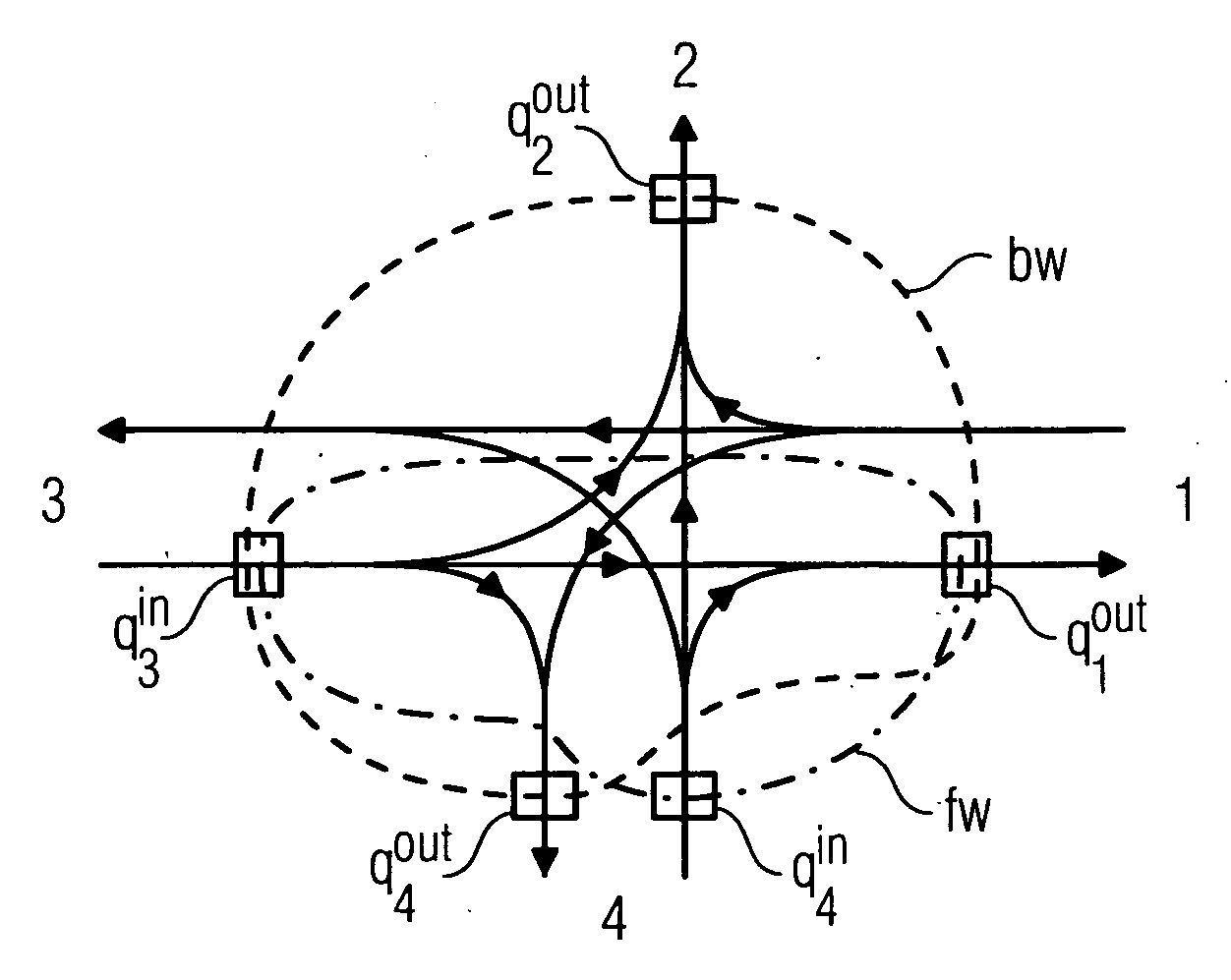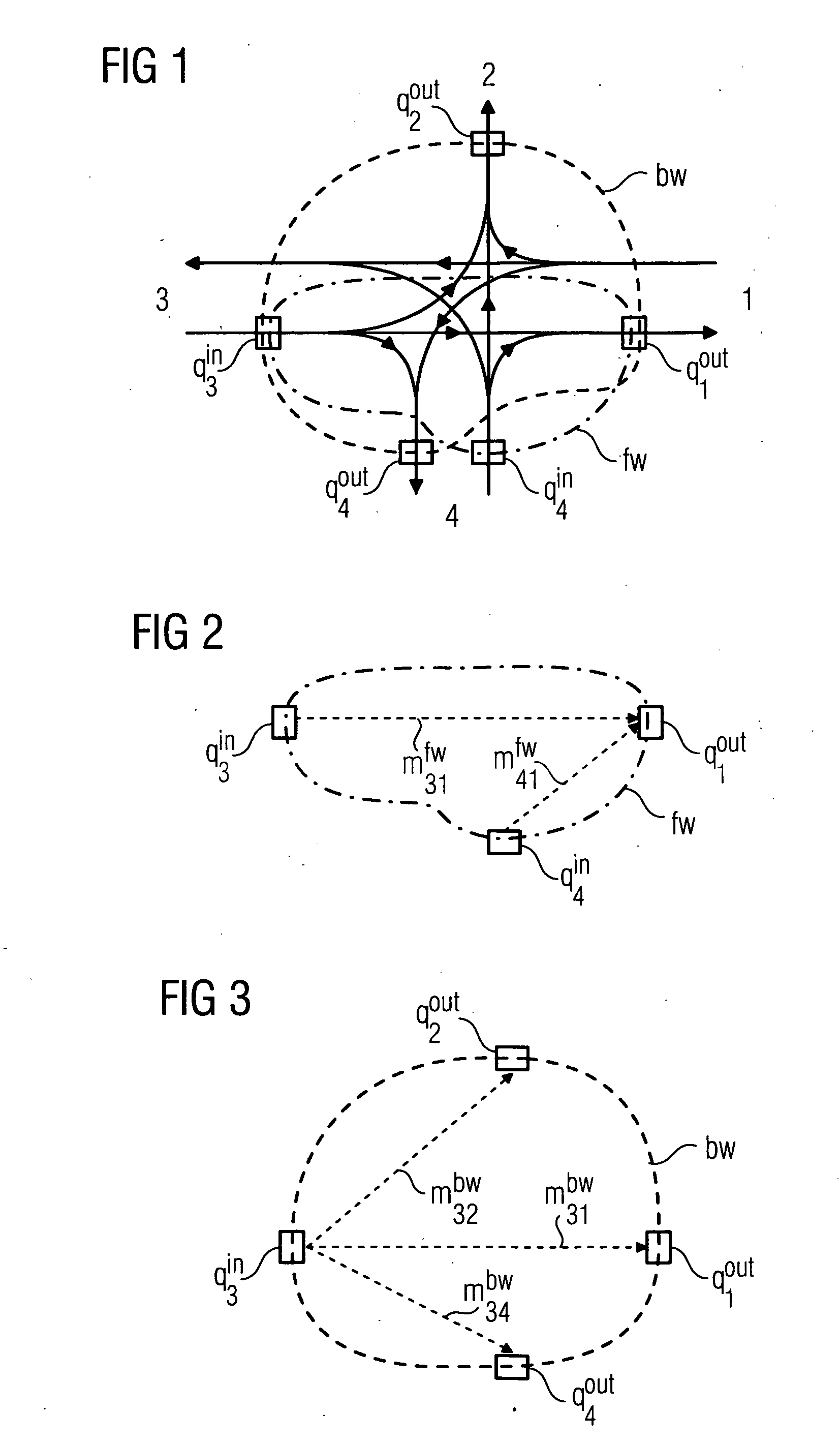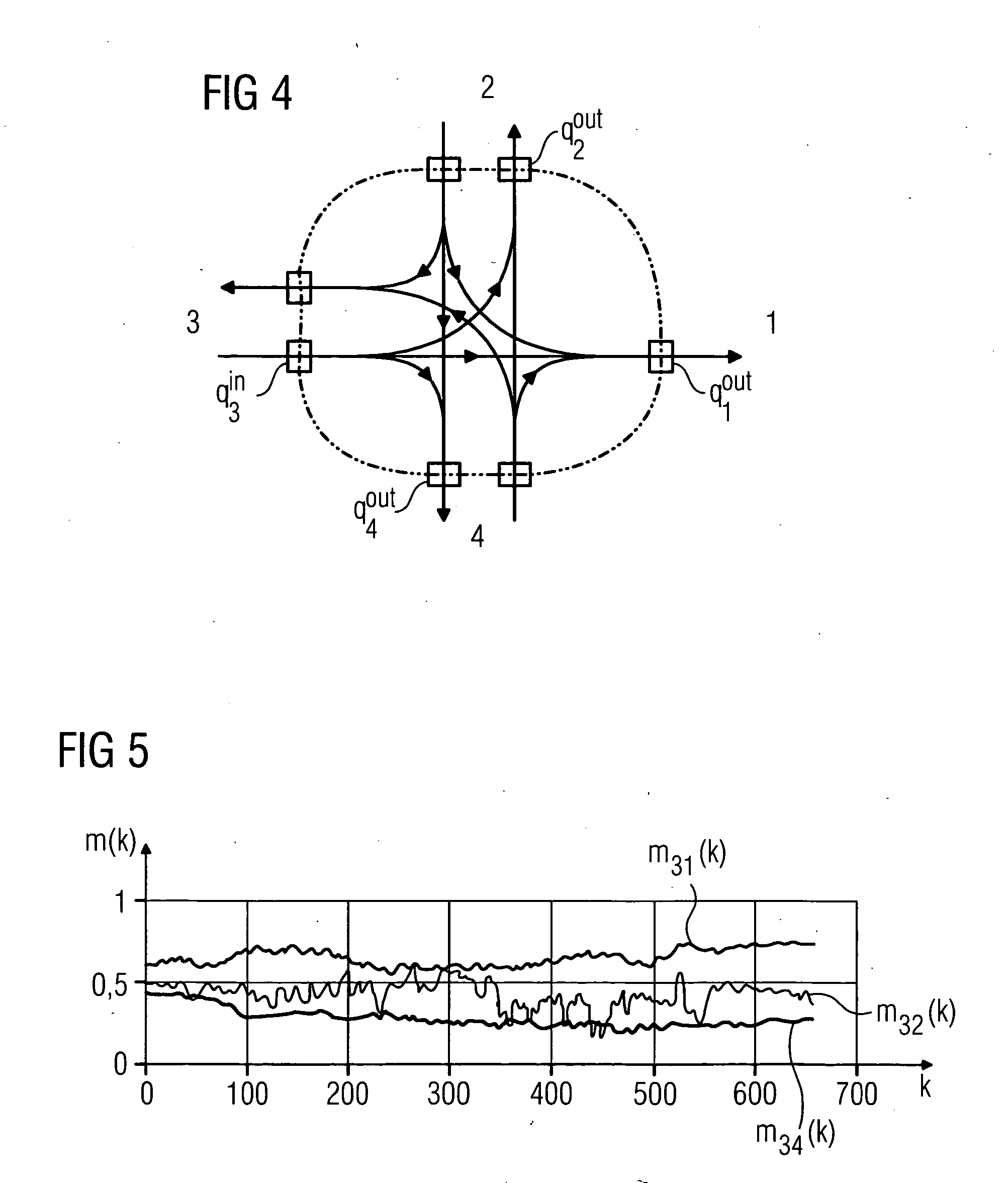Methods for Determining Turning Rates in a Road Network
- Summary
- Abstract
- Description
- Claims
- Application Information
AI Technical Summary
Benefits of technology
Problems solved by technology
Method used
Image
Examples
Embodiment Construction
[0031]FIG. 1 shows a section of a road network, such as an urban road network, in which the turning rates of the traffic streams are to be determined for traffic control purposes. It comprises an intersection having four arms i (i=1, . . . , 4) with entries and exits to / from the intersection, arm 2 in the example shown comprising only one exit. In the example described the roadway from entry 1 to exit 3 includes no measurement cross-sections. At all the other entries and exits of the intersection there are measurement cross-sections with detectors for recording entry traffic volumes qiin(n) and exit traffic volumes qiout(n) at predefinable measuring intervals n. A basic element of the method according to the invention for dynamic estimation of turning rates is a suitable breakdown of the network section into subnetworks. FIG. 1 shows a first subnetwork fw whose network edge is shown as a dash-dotted line and which includes measurement cross-sections in the exit 1 and in the relevant...
PUM
 Login to View More
Login to View More Abstract
Description
Claims
Application Information
 Login to View More
Login to View More - R&D
- Intellectual Property
- Life Sciences
- Materials
- Tech Scout
- Unparalleled Data Quality
- Higher Quality Content
- 60% Fewer Hallucinations
Browse by: Latest US Patents, China's latest patents, Technical Efficacy Thesaurus, Application Domain, Technology Topic, Popular Technical Reports.
© 2025 PatSnap. All rights reserved.Legal|Privacy policy|Modern Slavery Act Transparency Statement|Sitemap|About US| Contact US: help@patsnap.com



